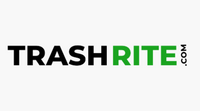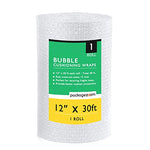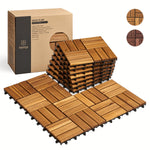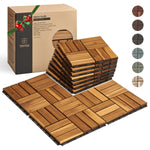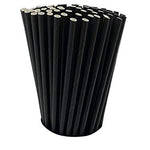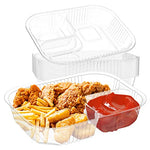You have no items in your shopping cart.
Cleaning is an essential aspect of maintaining a tidy and hygienic environment. Whether it's wiping countertops, dusting surfaces, or polishing glass, having the right cleaning tools is crucial. One such tool that has gained popularity for its versatility and effectiveness is the cleaning cloth. In this comprehensive guide, we will explore the wonders of cleaning cloth and how it can simplify your cleaning routine. From understanding different types of cleaning cloths to practical tips and FAQs, this article has you covered.
Cleaning Cloth: An Overview
Before delving into the details, let's first understand what exactly a cleaning cloth is. A cleaning cloth is a reusable fabric or synthetic material designed specifically for cleaning purposes. Its unique construction allows for effective removal of dirt, dust, and grime from various surfaces. Unlike disposable paper towels, cleaning cloths are eco-friendly, cost-effective, and often more durable.
Benefits of Using Cleaning Cloth
Using a cleaning cloth offers several advantages that make it a popular choice among cleaning enthusiasts. Here are some key benefits:
- Versatility: Cleaning cloths can be used on a wide range of surfaces, including countertops, windows, appliances, and furniture.
- Eco-friendly: By opting for reusable cleaning cloths, you contribute to reducing waste and promoting sustainability.
- Cost-effective: Cleaning cloths are a wise long-term investment as they can be washed and reused multiple times, saving you money on disposable cleaning products.
- Efficiency: The unique texture of cleaning cloths enhances their cleaning power, allowing for quick and effective removal of dirt and grime.
- Non-abrasive: Unlike some cleaning materials, cleaning cloths are gentle on surfaces, reducing the risk of scratches or damage.
Types of Cleaning Cloths
Cleaning cloths come in various types, each designed to cater to specific cleaning needs. Let's explore some popular types of cleaning cloths available in the market:
1. Microfiber Cleaning Cloth
Microfiber cleaning cloths are made from synthetic fibers that are incredibly fine and densely packed. These cloths are highly effective at capturing and trapping dust, dirt, and bacteria due to their superior absorbency and electrostatic properties. They are ideal for use on delicate surfaces such as glass, stainless steel, and electronics.
2. Terry Cloth
Terry cloth cleaning cloths are known for their soft and absorbent nature. They are commonly used for general cleaning tasks such as wiping spills, drying dishes, and dusting. Terry cloth is durable and can withstand frequent washing, making it a reliable choice for everyday cleaning.
3. Chamois Cloth
Chamois cloths are made from the hides of sheep or goats and are renowned for their excellent absorbency. They are commonly used for cleaning windows, mirrors, and car exteriors. Chamois cloths leave surfaces streak-free and are gentle on delicate glass.
4. Bamboo Cleaning Cloth
Bamboo cleaning cloths are eco-friendly options that are highly absorbent and naturally anti-bacterial. They are made from bamboo fibers, which are known for their sustainability and durability. Bamboo cloths are perfect for various cleaning tasks, from wiping countertops to mopping spills.
5. Disposable Cleaning Cloth
While reusable cleaning cloths are more sustainable, there are instances where disposable cleaning cloths may be preferred. These convenient cloths are typically made from paper or non-woven materials and are suitable for one-time use or for tackling particularly dirty areas.
Best Practices for Using Cleaning Cloth
To maximize the effectiveness of your cleaning cloth and ensure a thorough cleaning experience, follow these best practices:
1. Choose the Right Cloth for the Task
Different cleaning tasks may require different types of cleaning cloths. Ensure you select the appropriate cloth based on the surface you are cleaning to achieve the best results.
2. Dampen the Cloth
For general cleaning, slightly dampening the cloth can help enhance its cleaning power. Avoid soaking the cloth, as excess moisture may cause damage to certain surfaces.
3. Avoid Harsh Chemicals
In most cases, cleaning cloths can effectively remove dirt and grime without the need for harsh chemicals. Opt for eco-friendly cleaning solutions or simple household ingredients like vinegar and baking soda for a safer and more environmentally friendly cleaning experience.
4. Wash and Store Properly
Regularly washing your cleaning cloths after use is essential to maintain their cleanliness and effectiveness. Follow the manufacturer's instructions for washing and drying to ensure their longevity. Store your cleaning cloths in a clean, dry place to prevent the growth of bacteria or mold.
FAQs About Cleaning Cloth
-
Q: Can I use the same cleaning cloth for different surfaces? A: It's generally recommended to use separate cleaning cloths for different surfaces to avoid cross-contamination and ensure optimal cleaning results.
-
Q: How often should I replace my cleaning cloth? A: The lifespan of a cleaning cloth depends on its quality, frequency of use, and maintenance. Generally, it is advisable to replace cleaning cloths every few months or when they show signs of wear and tear.
-
Q: Can I use cleaning cloths for cleaning delicate surfaces like LCD screens? A: Yes, microfiber cleaning cloths are safe to use on delicate surfaces like LCD screens. Their soft texture and non-abrasive properties make them ideal for such applications.
-
Q: How can I remove stains from my cleaning cloth? A: Soak the stained cleaning cloth in a mixture of mild detergent and warm water. After a few minutes, gently scrub the stain and rinse thoroughly. Machine wash the cloth as usual.
-
Q: Are there any surfaces that should not be cleaned with a cleaning cloth? A: Avoid using cleaning cloths on hot surfaces, as the heat can cause damage to the cloth or surface. Additionally, some specialized surfaces may require specific cleaning methods or materials.
-
Q: Can I use cleaning cloths for outdoor cleaning tasks? A: Yes, cleaning cloths are versatile and can be used for outdoor cleaning tasks. However, consider using separate cloths for indoor and outdoor cleaning to prevent the transfer of outdoor debris and germs into your living spaces.
Conclusion
A cleaning cloth is a versatile and cost-effective tool that can revolutionize your cleaning routine. With its ability to tackle various surfaces and its eco-friendly nature, it's no wonder cleaning enthusiasts swear by it. By understanding the different types of cleaning cloths available and following best practices, you can achieve a spotless and hygienic environment effortlessly. So, grab your cleaning cloth and let the magic begin!
